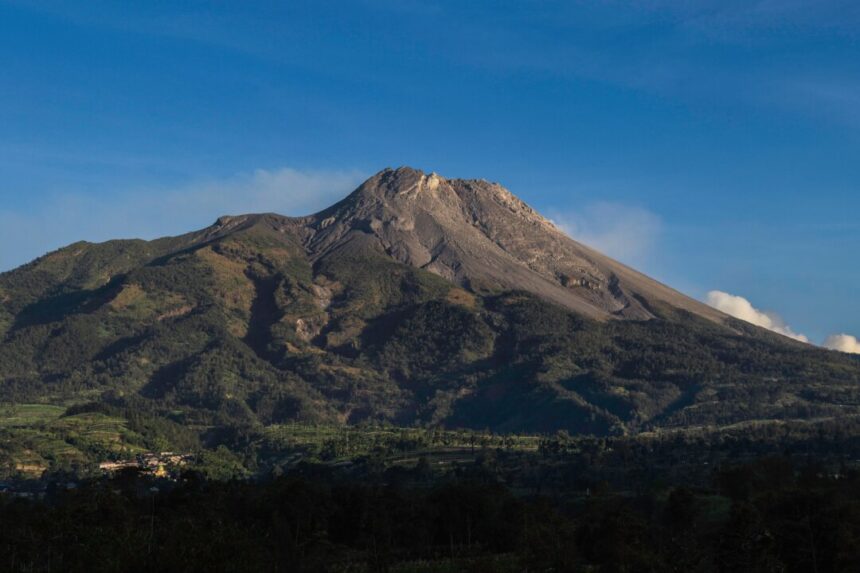PADANG, Indonesia—Indonesia experienced an eruption of one of its most active volcanoes on Sunday, with Mount Marapi in West Sumatra’s Agam district emitting thick ash columns several times. Fortunately, there were no reported casualties from the eruption.
Mount Marapi is known for its unpredictable eruptions, which are not typically caused by deep magma movements that trigger seismic activity. The volcano sent hot ash clouds spreading for miles, covering nearby villages and towns with volcanic debris, and shooting ash columns up to 6,560 feet.
The volcano, standing at nearly 9,480 feet, has been on the second-highest alert level since January, restricting climbers and villagers within 1.8 miles of the crater mouth due to potential lava threats.
A previous eruption in December 2023 resulted in the deaths of 24 climbers and injuries to several others. Two climbing routes have been closed since the incident.
This recent eruption comes after monsoon rains caused a mudslide and cold lava flow from Mount Marapi, leading to devastating floods that claimed the lives of 67 people and destroyed numerous homes.
“The villagers are still recovering from the recent disasters caused by Mount Marapi, especially as the rainy season approaches. However, they have gained valuable knowledge on how to mitigate the risks of future eruptions,” said Ahmad Rifandi from Indonesia’s Volcanology and Geological Hazard Mitigation Center at the Marapi monitoring post.
Indonesia, a nation of 282 million people, is prone to seismic events due to its location along the “Ring of Fire,” a region with numerous seismic fault lines surrounding the Pacific Ocean.
By John Nedy







